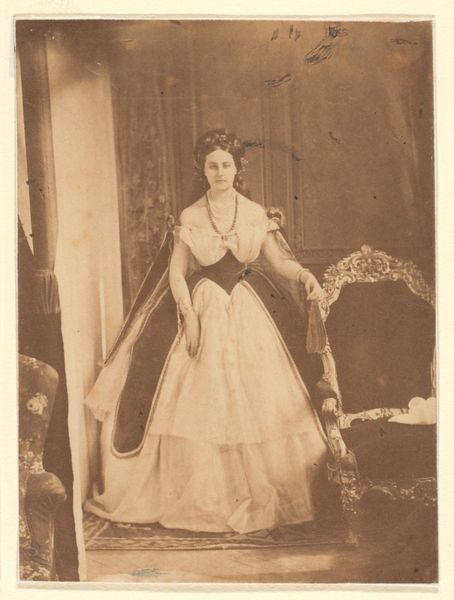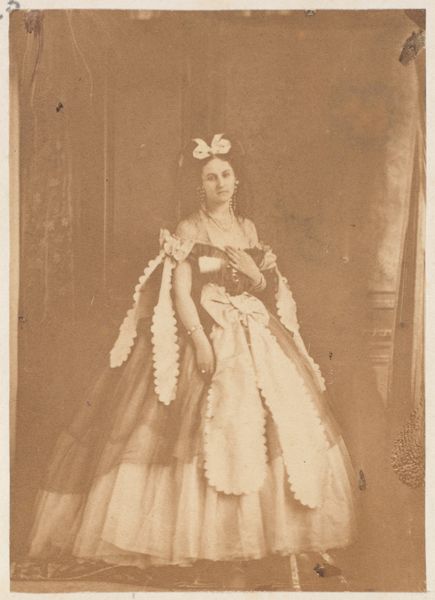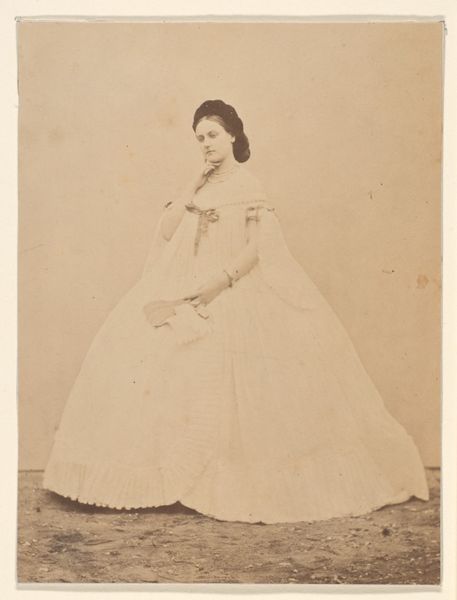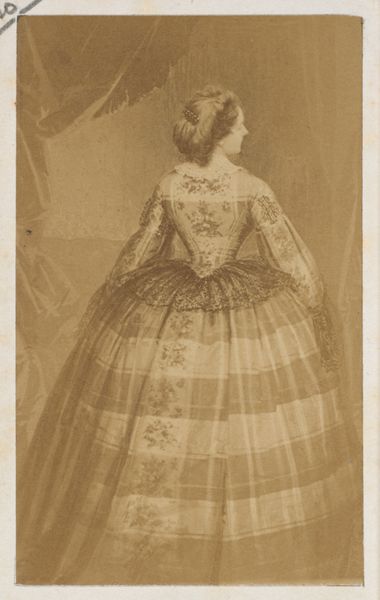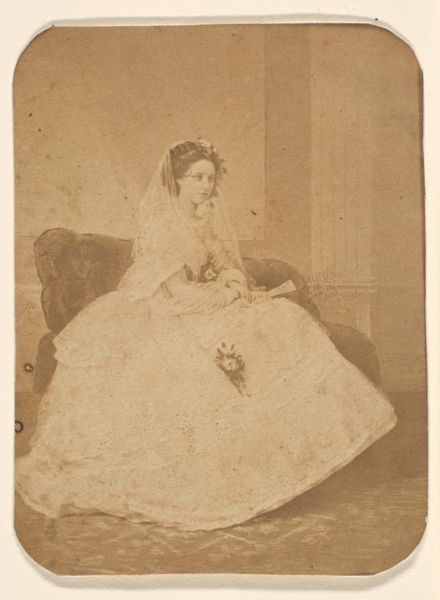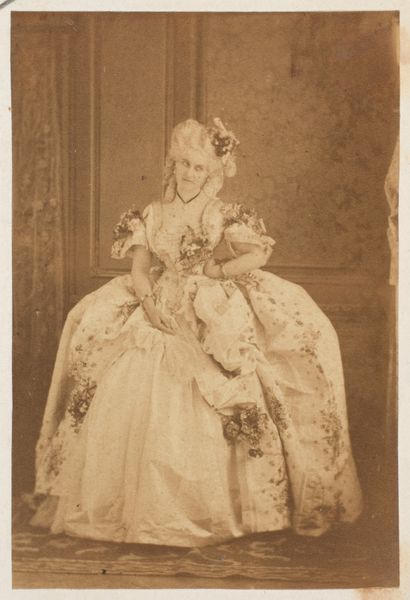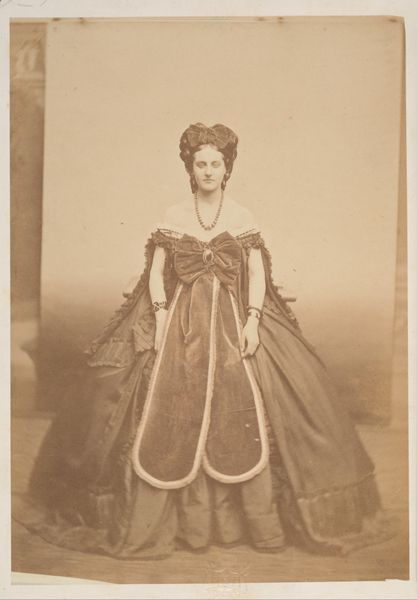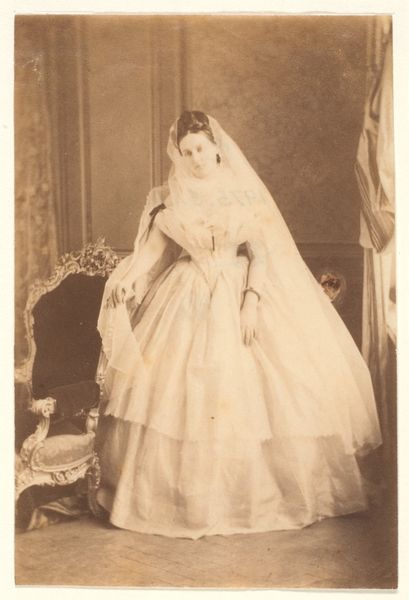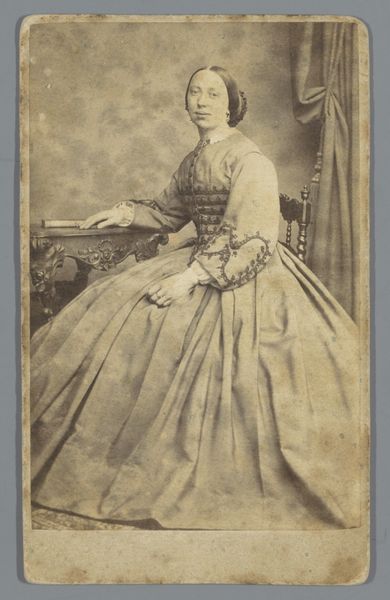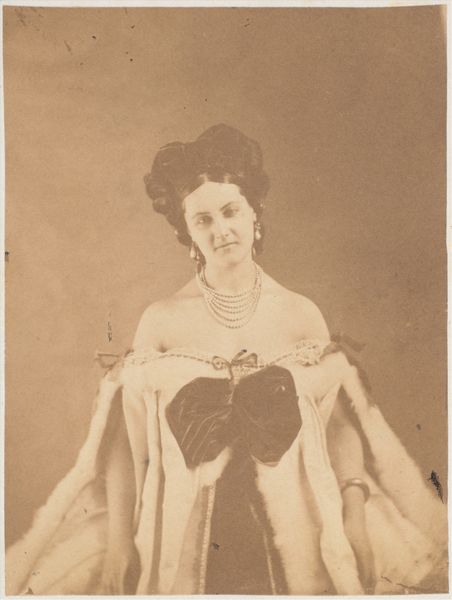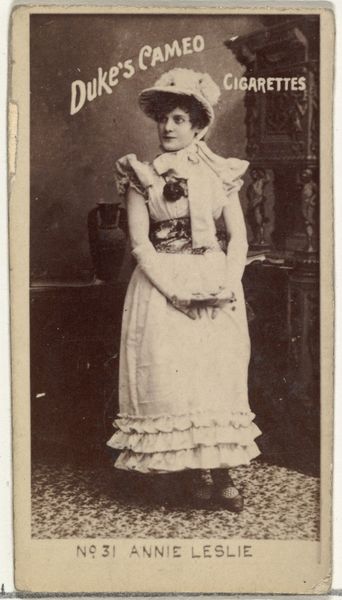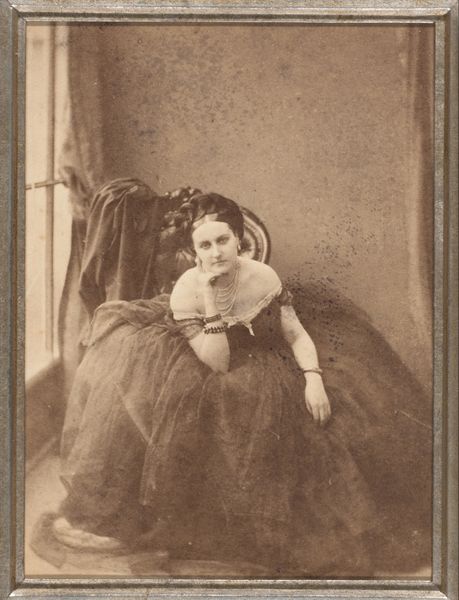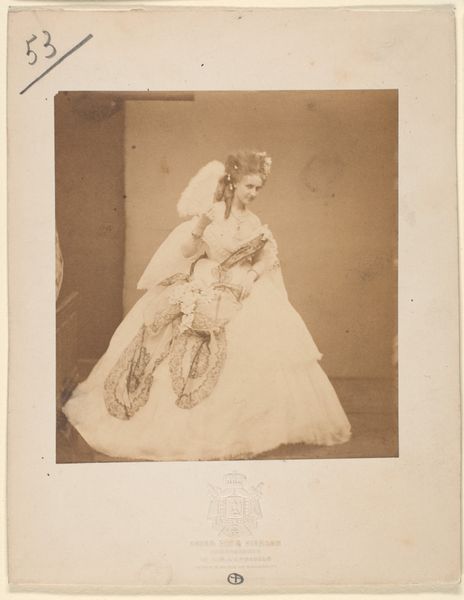
Dimensions: 7.3 x 10.2 cm. (2 7/8 x 4 in.)
Copyright: Public Domain
Curator: Gazing upon this image, what strikes me first is its air of quiet dignity. Editor: And for me, it’s the weight of societal expectations embedded within that poise. What exactly are we looking at here? Curator: We have “Bal,” an albumen print photograph from the 1860s, created by Pierre-Louis Pierson. You can find this treasure at the Metropolitan Museum of Art. This photographer was known for portraiture. Editor: The “Bal”—fitting. The attire speaks volumes about her social standing, her prescribed role. Those massive skirts always make me consider the physical restrictions placed on women in that era. Curator: Absolutely. That dress isn’t just clothing; it's a statement of identity and belonging, isn’t it? An expression of her status…a cage gilded with social expectations. Do you notice her posture? And the soft focus of the albumen print. It evokes something romantic, almost dreamlike. Editor: Dreamlike maybe, but also carefully constructed. This photograph presents an idealized vision of femininity intended for consumption. This controlled self-representation underscores how women navigated the rigid social codes and power structures of their time. Think about the access to resources required for this level of presentation. It signals privilege that was tied up with questions of gender and race too. Curator: So much unspoken. Perhaps the very reason Romanticism embraced these elaborate codes was to transcend them through symbolic imagery and expressions of intense emotion. The artist captures the essence of the ball, its fantasy, the symbolic role-play enacted there, through the sitter's appearance. Editor: The title too – so economical! In one word, it condenses the expectation that a woman should aspire to no more than an enchanting, ephemeral, performative social role. Pierson's art memorializes this complex world of balls and beauty and carefully negotiated privilege. I can't help but imagine her beyond the confines of the image. Curator: It’s easy to lose the historical perspective, the visual and symbolic language that has passed us by. But I feel richer after examining it. Editor: I think engaging with a photograph like "Bal" provides us an opportunity to consider not just the woman within the frame, but the broader historical narrative surrounding femininity, power, and representation.
Comments
No comments
Be the first to comment and join the conversation on the ultimate creative platform.
